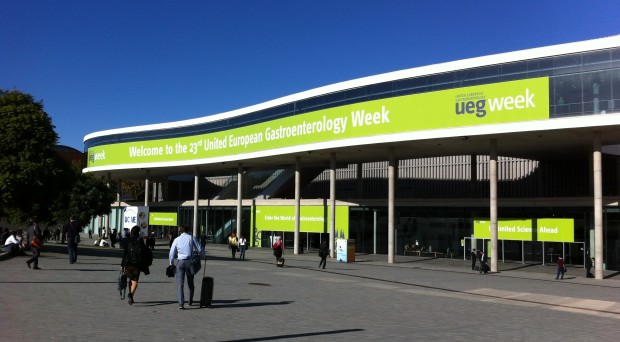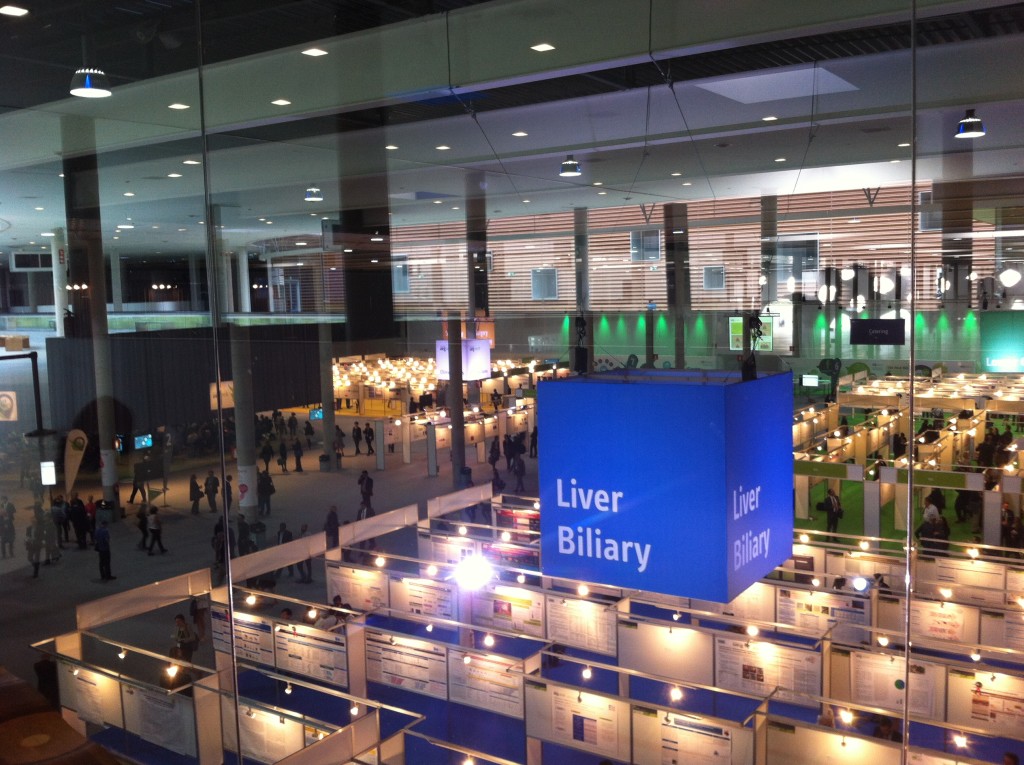
The promise of personalized treatment
Several speakers at UEG 2015 covered the theme of personalizing risk prediction and treatment for gastrointestinal diseases. During a press conference, Michael Farthing highlighted the importance of understanding diseases at the molecular level, which may allow treatment at an almost individual extent. The immediate benefits are significant savings in time and expenses, and also decreased chances of administering the wrong drugs.
Prevention of colorectal cancer (CRC) is fundamental to reduce the burden of this devastating disease, and Antoni Castells discussed the benefits of improving personalized risk prediction in CRC prevention.
Genome-wide and epigenome-wide association studies (GWAS and EWAS) are invaluable tools to risk-stratify patients through a non-invasive procedure. Patients at risk after positive genetic testing should be offered screening colonoscopy follow up and surgery if necessary.
Exome sequencing in patients with Lynch syndrome allows the identification of mutations in cancer predisposition genes, which are not necessarily expected according to patients’ history. Selecting the patients who can benefit the most from colonoscopy screening can increase likelihood of better CRC prevention and patient adherence.
Personalized medicine is about understanding diseases at molecular level, to treat almost at patient extent.
Michael Farthing
Helicobacter Pylori and gastric cancer
Gastric cancers are currently the focus of intense research, as their worldwide presence is caused by a multitude of factors. H. Pylori germs are present in two-thirds of the global population, and their infections are main drivers of gastric disease, which in turn can develop into cancers.
In their recently published paper, Richard Hunt and colleagues reviewed the importance of a healthy stomach and how H. Pylori can severely disrupt gastric physiology, concluding that disease prevention and public awareness are fundamental to reduce gastric diseases.
Also in a paper by Sugano and colleagues, results from the Kyoto Global Consensus meeting reveal the importance of treating H. Pylori infection before atrophic gastritis development, stressing that eradication of H. Pylori reduces the risk of gastric cancer.

Viral and autoimmune liver diseases
Hepatitis C management is at the center of clinical research, given its complex virology and heterogeneous treatment options. At ECC 2015, Heiner Wedemeyer reported that a number of drugs for hepatitis C treatment are currently being released, with more expected in 2016.
When administered in combination, these drugs target three molecule types (-asvirs, -previrs and –buvirs) to treat hepatitis C. Future larger studies are required to demonstrate the recent positive data from cohort studies regarding safety of such treatments, which may allow a sharp decline in HCV-associated liver deaths in the coming decades.
Thanks to a number of GWAS studies, we are now starting to understand the factors that drive numerous autoimmune liver diseases. A recent study by Farh and colleagues identified the shared genetic features between different autoimmune diseases, which will eventually allow to manage each specific disease in a targeted way.
Finally, primary biliary cirrhosis was recently renamed primary biliary cholangitis, recognizing that cholangitis is an inflammatory state rather than an end state of liver disease. This important change will affect clinicians and patients who are undergoing treatment.
Non-alcoholic fatty liver disease (NAFLD) – new therapeutic hopes
A talk by Arun Sanyal provided an overview of the current therapeutic advances in nonalcoholic steatohepatitis (NASH) treatment, the most common form of chronic liver disease. About a third of the general population presents a fatty liver, but a lower proportion will then progress towards steatohepatitis and cirrhosis.
Paul Angulo and colleagues report in their longitudinal study that fibrosis stage is associated with long term mortality and serious adverse events, unlike any other histologic features of steatohepatitis. This can allow risk-stratification of patients with confirmed NAFLD according to their risk profile, using non-invasive techniques to reduce unnecessary cost and choose the most appropriate targeted therapy. Surgery can then be considered for more advanced cases.
Obeticholic acid is a molecule derived from natural bile acids, where initial results reported by the FLINT trial indicate it may be a promising drug to improve histological features of NASH. However, its long term benefits and safety require additional studies.
As highlighted by Rui Eduardo Castro in the talk on NASH from bench to bedside, several factors contribute to the advance of NAFLD. The disease can eventually develop into hepatocellular carcinoma (HCC), where almost 40% of risk factors are related to diabetes and obesity.
Cirrhosis is not necessarily a pre-requisite for progression to HCC, but nuclear receptors and miRNAs cover a significant role in the multiple pathogenic mechanisms of NAFLD advancement. We look forward to the publication of trials studying the causes of disease development.

BMC Medicine: passionate about quality, transparency and clinical impact
2014 median turnover times: initial decision three days; decision after peer review 41 days
Comments